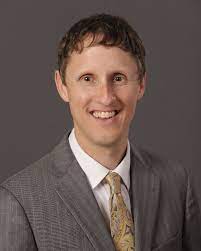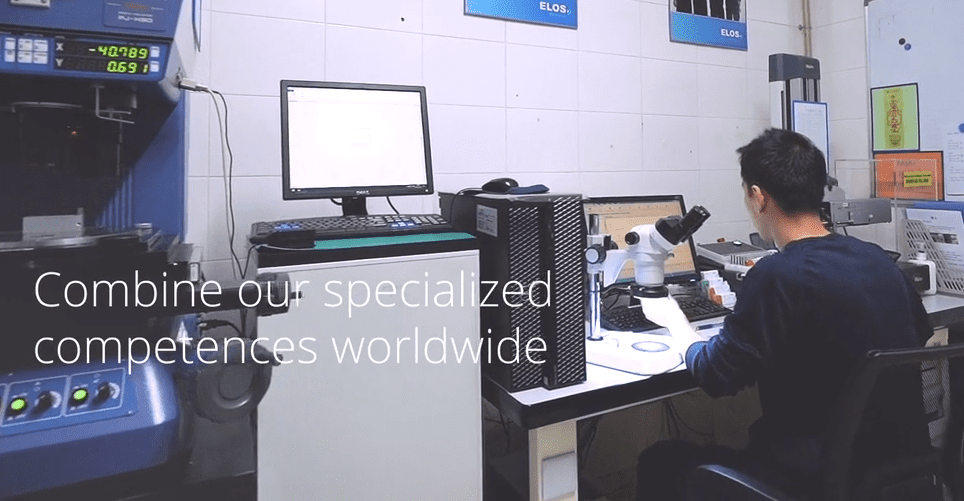At Elos Medtech, we love to collaborate with innovative market experts. Prosthodontist Dr. Mark Ludlow is one of them. His passion is in the development and integration of digital technology in the practice of everyday implant and restorative dentistry. A couple of years ago, Mark came to us with an innovative idea for full-arch cases. This is how it all came about.
Hi, Mark! Please, tell me about what you do and your experience?

I am a prosthodontist. I started my career as a lab technician and then went to dental school at the University of Connecticut. I finished up dental school and was a general dentist for six years in a private practice. Then I sold my practice, went back to do prosthodontics at the University of North Carolina, and finished up at North Carolina. I am now the Section Head of Implant Dentistry, Digital Dentistry, and Removable Prosthodontics at the University of Utah School of Dentistry.
You practice and teach prosthodontics, but you are also interested in product development. Where does this passion come from?
I first started getting into digital dentistry back in 2000 when I worked as a lab technician. Back then, we had one of the first desktop scanners and were making copings for crowns. I thought that was super cool. Then, when I went to dental school, we didn’t have any technology at all. So, when I got out, that was something I wanted to get immediately into. When we got our first intraoral scanner at our clinic back in 2006, we started designing, scanning, and milling things. I really enjoyed it – it changed the way I did dentistry.
Over the past 15 plus years, digital dentistry has just evolved and gotten better and more streamlined. We have been able to use it in bigger, better, and different cases. We used to be able to just scan a tooth and a couple of parts of the teeth next to it. And now, we can scan all the way across all the teeth, we can scan the whole mouth, we can build things on implants, and we can integrate it into surgery. We can do all the things that we never imagined were possible back then. That is something that excites me – the constant evolution of change from digital dentistry.
You are developing a new product with Elos Medtech that allows clinicians to use a fully digital workflow when doing full-arch cases. Please, tell me about this project and how it started?
This came about a couple of years ago because I had some ideas. I constantly like to tinker and try new things and ways to make things more streamlined, smoother, faster, and better. Because even though I am an educator, I am also a wet-fingered clinician, constantly working with patients, day in, day out.
I work with a number of companies, and, initially, I approached some of the bigger companies and said: Hey, I have got this idea to try these different things that will make our clinical life and our patients’ lives better. But when I pitched the concept to them, I got back: “There is absolutely no market for this,” “Scanners aren’t accurate enough,” “You can’t do it,” “No one can do it,” and “In no way, shape, or form we are doing this.”
They couldn’t even grasp it because they had a set idea of what they wanted, which was just doing what we have always done in dentistry, while my idea was a pretty big departure from that. However, from a clinician and a laboratory perspective, it made oodles of sense as it would make all of our lives better.
It really frustrated me. So, I moved on and thought: Let us work with somebody that will be willing to move forward with things. I went to Elos Medtech and showed them the idea. We had a meeting, and within the first two minutes, they saw the potential of what this idea could do and how it could benefit everyone – they jumped on it immediately.
They were really excited and wanted to start developing the concept that I had come up with, and then it has just grown from there. Again, it is a very different way of thinking than how we have always done cases in dentistry. But it streamlines the cases significantly and makes predictability a lot higher than the ways we have done it in the past.

So, how did you come up with this idea in the first place?
We have always done full-arch implant restorations when people get implants, and we are going to make their final teeth. The question is: How do we transfer all that to the laboratory to have them build everything? From a digital perspective, there are not very streamlined ways of doing that. The patients will either come in with some temporaries or some dentures. And there has never been a solution for the denture side of things.
Having gotten into intraoral scanning very early, I really wanted to use my scan for full-arch implant restorations to simplify the process and minimize the risk of things going wrong. Because there are some inherent complications and problems. At the bare minimum, we need three scans: One for the provisional, one for the tissue, and one for the scan body. And then you have got the problems, especially on the lower arch, where it can be extremely difficult to pin the scan body back to anything.
I spent a couple of years just thinking about how we could do this more efficiently and came up with this different concept: We all use guide pins to bond the acrylic when we do our conversion prosthesis. So, why not just create a guide pin type of scan body where we don’t even have to take the prostheses off initially. Instead, we can go ahead and put it right through the temporary while the patient is still using it by just taking out the bridge screw and screwing this thing in.
I am pretty excited about this, because I think the ability to do full-arch cases using a fully digital workflow will help simplify a lot of the problems clinicians currently experience. It also solves the needs of how 100% of the patients will actually show up to your clinic and allows you to treat them extremely efficiently with fewer scans and in a more accurate way.
That is how it all came about. It was just about seeing the need, figuring out how to fill that need, and then going from there.
What is the main challenge when going from idea to prototype?
The main challenge is making sure that the company is willing to look at things from a different perspective. Elos Medtech is nice because they are a slightly smaller company, more flexible and adaptive to the environment. They can make changes and try things a whole lot easier than sometimes these big corporations. So that was a big thing – finding a partner in crime that was willing to look at things differently and think outside the box.
You mentioned that you have worked with many different companies in product development. What is your experience of Elos Medtech?
Yes, I have had a lot of experience in R&D and product development with a lot of different companies. And when you try to develop a product, a lot of the time, you are at this big long uphill climb. You start at the very bottom and have got to go through all these switchbacks. Sometimes, this whole product development process can take years upon years to get an idea from inception and all the way to where you actually can use the product.
What has been probably my favorite thing about working with Elos Medtech so far is that it hasn’t been uphill at all. Elos Medtech has a vision and a desire to go in the correct way and be progressive. This has really shortened the big product development span.
What has been my favorite thing about working with Elos Medtech is that it hasn’t been uphill at all. Elos Medtech has got a vision and a desire to go in the correct way and be really progressive. “I really like Elos Medtech’s ability to constantly try to improve their products, think out of the box, and find new ways of doing things. Instead of just sitting stagnant, it is a constant roll of water.”
A few years ago, Harvard Business Review published an article about what sets successful CEOs apart. They looked at the successful behaviors of thousands of CEOs and companies. Out of these behaviors, the far most important they saw across the board was “deciding with speed and conviction.” They saw that these companies made decisions earlier, faster, and with greater conviction – even in areas where they sometimes didn’t know the answer and how exactly they were going to formulate their strategy.
“Elos Medtech has a laser-locked focus on what they want to accomplish and be able to move forward with things. It was incredible how quickly it went from an idea to a prototype.”
It sounds like clinicians and engineers both play important roles in a successful development project?
Yes, because clinicians are, in essence, clinical. We can have all the clinical ideas in the world, but we need people much smarter than us, from the engineering perspective, to be able to design the parts and workflows that we need, and then design the software platforms and do all the coding, so that we can design the things that we want off of there. Those are things that, from a clinical side, none of us could do.
And sometimes, it is the other way around. Engineers come up with solutions, but those solutions really don’t fit our needs from a clinical perspective. And so, there has to be a collaboration between the two sides; we are looking at it from one side, and they are looking at it from another side. Because the engineers aren’t clinicians and, by the same token, we are not engineers. There has to be that mutual understanding between both parties to work together for the greater good.
Thank you so much, Mark, for a lovely chat and for sharing your experience, knowledge, and insights with us.
Do you have ideas that would make the lives of dental professionals and patients? Let us know! We are always looking to collaborate with innovative market experts.







